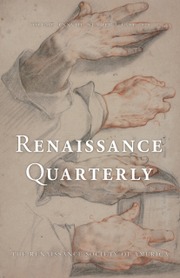Jason Rosenblatt’s study of the relationship between John Selden and Milton serves as a companion piece to his earlier analysis of Selden’s influence on seventeenth-century writers and leading intellectuals in Renaissance England’s Chief Rabbi: John Selden (2008). Rosenblatt’s John Selden: Scholar, Statesman, Advocate for Milton’s Muse examines the influences that Milton and Selden may have had on each other, and it is exceptionally learned, well-researched, and thoughtful in its claims. His argument focuses on the centrality of the rabbinic tradition on the development of Selden’s thought and how his handling of it in such works as De Jure Naturali & Gentium (1640) and De Synedriis (1650–55) affected Milton’s prose and had a “profound influence on Milton’s poetics” (25). In particular, Rosenblatt examines how Selden’s handling of this Jewish exegetical and interpretive tradition may have affected Milton’s handling of natural law in the divorce tracts, excommunication in shorter poems like “On the New Forcers of Conscience,” and catalogue of pagan deities, marriage, and Noachide Laws (universal moral laws that Selden, following Talmudic interpretations, contends were given to Adam) in Paradise Lost. In so doing, Rosenblatt seeks to recover the importance of Selden’s rabbinic thought from its suppression by editors of Selden and Milton through the early twentieth century.
The book is divided into an introductory chapter on the major currents of Selden’s thought, five chapters that explore Selden’s writings on the Talmudic tradition and their influences on Milton, and a conclusion that further details Selden’s views of divine law and the importance of his De Jure to Milton’s Paradise Lost. Rosenblatt’s scholarship shines through his explication of Selden’s legal, philological, and philosophical methods, which extends to considerations of the original Hebrew terms and the range of sources that Selden incorporates into his works. Yet he also acknowledges the potential limitations of Selden’s “erudite style” and tendency toward extended digressions, noting that “the mass of information [in Selden’s works] sometimes obstructs the flow of thought, blurs the reader’s focus, and thwarts the desire for form” (60). The chapters include lively biographical information about Selden and relevant historical context, such as an excellent account of the “great debate” in February 1641 between Selden and the Presbyterian George Gillespie in the Westminster Assembly over whether civil or ecclesiastical authorities have jurisdiction over excommunication. The inclusion of passages from Selden’s Table Talk, which are filled with his unfiltered views of contemporary issues and events, provides a wonderful complement to Selden’s often challenging scholarly style. For instance, Rosenblatt supports his observation that Selden had “no love for the Christian clergy” by including Selden’s unflattering description of the bishops after the Exclusion Bill of 1651: “The bishops being put out of the house, whom will they lay the fault upon now? When the dog is beat out of the room where will they lay the stink?” (231). The portrait of Selden that emerges in Rosenblatt’s account, then, is of a generous, courteous, and humane legal historian committed to Erastianism and interpreting the Bible through rabbinic eyes.
In tracing the mutual, though uneven, influences between Selden and Milton, Rosenblatt commendably tempers his claims with what can be demonstrated through documentary evidence and explicit references in the works of both writers. To select one example, he qualifies the direct influence of De Jure on Paradise Lost by stating that it is “irresistibly tempting at least to suggest that the Adamic/Noachide laws discussed in its 847 pages in folio may have provided Milton with the polity of paradise” (4). He is also very clear in delineating issues where Selden and Milton differed, such as in their views on Pauline theology. However, Rosenblatt does not shy away from repeatedly praising Selden and Milton as geniuses, and he is too quick to minimize both writers’ misogyny. Yet as one of a growing number of recent advocates for reassessing the importance of Selden in seventeenth-century intellectual life, Rosenblatt makes a compelling case for recognizing the centrality of the rabbinic tradition in his works.



